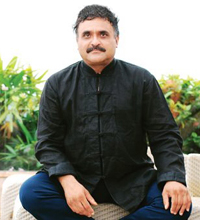
By Yogi Ashwini
The pleasures and the miseries of life are the experiences of the soul - through the body. Ayurveda defines body as something that is constantly going through the process of decay – ‘shiryate iti shariram’. Here, decay indicates the gradual ageing of the body. This process is intensified by the onslaught of diseases, and a disease can enter the body only if there is an imbalance (vikriti).
Diseases may be categorised as Mental and Physical.
Factors that affect the mind are rajas and tamas, which are of psychological importance. These are the pathogenic factors of the mind and can only be reconciled by the practices of Yog and Sanatan Kriya under the guidance of a Guru. These have been explained in detail in my book, ‘ Sanatan Kriya Ageless Dimension’.
In the physical, as per Ayurveda, an imbalance relates to the imbalance of the three doshas of Vat (vayu), Pitta (agni), Kapha (s leshma). These three are the pillars of the body. The maximum number of diseases, about eighty, is caused by an imbalanced vat owing to the mobile nature of vat. Pitta is the second most potent factor, and is said to cause about forty diseases. Kapha, the least potent of all, causes about twenty different kinds of diseases. In their various permutations and combinations diseases can take innumerable forms, thereby causing diseases that may even become incurable after a stage.
A disease manifests in a body when any of the doshas increases or decreases from its state of balance. The state of balance is different in every individual depending on the prakriti of that person. The mool prakriti of a person never changes as it is decided at the time of conception in the mother’s womb. The dominating doshas of the parents at the time of conception determines the mool prakriti of that individual.
For example, ginger is poison for people with high pitta but a digestive tonic for others. The aim is to keep the body in a state of balance to maintain youth, health and glow.
Ayurveda does not speak of cures or treatments, but prescribes health and balance. The regimens, precautions, diets, habits prescribed in Ayurveda are aimed at achieving a state where without using medicines one learns to keep the mind and body healthy and also slows down the ageing process.
Ayurveda strives to maintain a disease-free state, which is the state of equilibrium (samyavastha). Equilibrium gets disturbed mainly because of three reasons: wrong utilization, non-utilization, and excessive utilization of time, mental faculties and objects of the senses.
I detail here a simple remedy to balance out the vitiated vata owing to dampness of monsoon, making one susceptible to disease and infection.
# Mix tulsi leaves with equal amount of water and grind to paste. Squeeze juice through a muslin cloth. Add raw organic honey in 1:2 (tulsi juice) ratio. This mixture when prepared using certain mantras and taken daily, detoxifies the system and keeps disease at bay.
It is advised that before taking any ayurvedic treatment you get yourself evaluated by an expert. To know your constitution, you may contact the vaid at Dhyan Ashram.
Yogi Ashwini is the Guiding Light of Dhyan Foundation and an authority on the Vedic Sciences. His book, 'Sanatan Kriya, The Ageless Dimension' is an acclaimed thesis on anti-ageing. Log onto to www.dhyanfoundation.com or mail to dhyan@dhyanfoundation. com for more